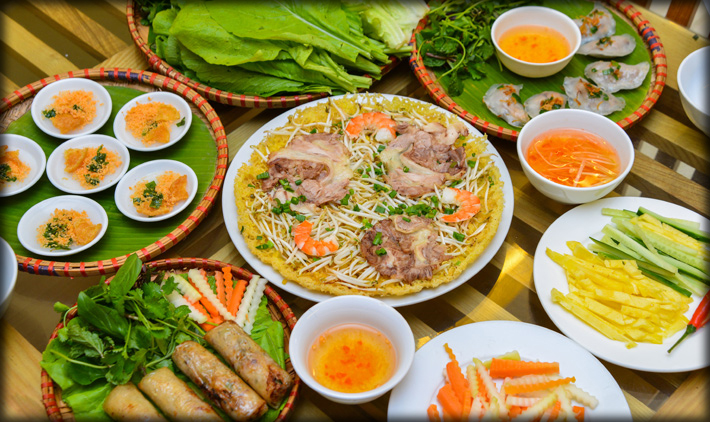
In this day and age, getting experiences from tasting food and drinks of different countries is becoming one of the main incentives for tourists to travel, and this incentive gave birth to a new way of tourism: Gastronomic or culinary tourism.
If you are seeking for a country where you can not only enjoy fabulous natural scenery, beautiful beaches and grandiose mountains but also taste a variety of unique delicious local food, welcome to Vietnam. The country has a diverse culture which comprised of 54 ethnicities and divided into three geographic areas with different cultures and climates. In addition, Vietnamese cuisine is strongly affected by that of China and France during colonial times. Thanks to this interesting history, Vietnam is a melting pot of various culinary heritages that make the country a promising destination for any gastronomic tourist.
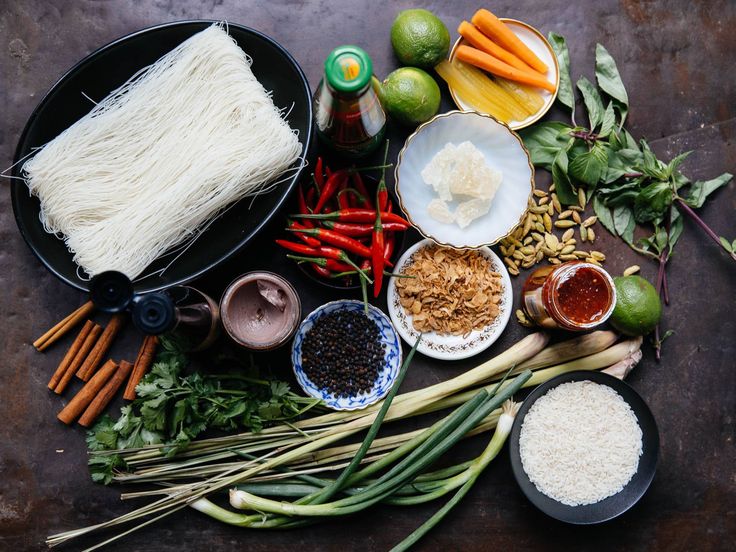
Vietnam Food Ingredients
About Vietnamese gastronomy
Vietnamese cuisine is distinctive with unique fusions of ingredients. Foods are always kept at an appropriate level of spicy, sour or salty taste. In addition, foreigners tasting Vietnamese food also have chances to explore Eastern mysteries because cooking Vietnamese food is an art of balancing between what so-called “Five basic elements of Eastern philosophy” in order to provide the most nutritious and delicious meals. For example, foods with cold nature should be eaten with foods which of hot and spicy nature to offset each other, if not, the foods is deemed harmful for your health. One can feel such balance from littlest detail such as the dipping sauce: Vietnamese often mix the tangy taste of limes with a few thin slices of chilis to the sugar-added salty fish sauce – which is served with the rather plain lettuce and noodle (found in dishes like Bun cha or Banh Cuon).
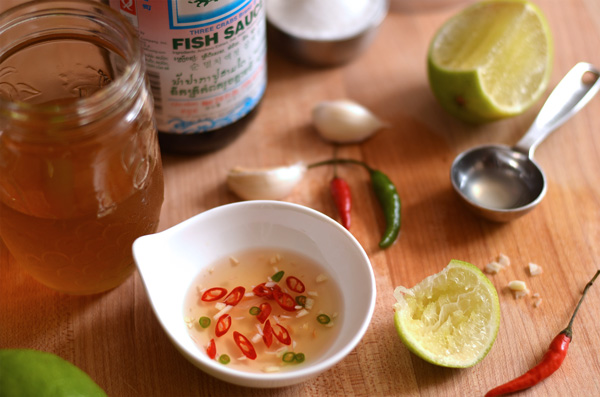
A Bowl of Dipping Sauce reflects all taste: sweet, sour, tangy and spicy
Although Vietnamese gastronomy is influenced by that of other countries like China or France, there still a distinctive aspect to it: the look or the nutrition is not its focus, Vietnamese cuisine sets the taste of food at the highest priority. Due to this, although cooking Vietnamese food doesn’t require complicated processes like Chinese foods, not so eye-catching like Japanese dishes, it can give you unforgettable impression by its taste.
A traveler may go through almost every well-known site of Vietnam in a short-time but one can never complete its menu of food due to its regional variations. Hanoi has the most diverse list of native food which can be representative for the North with famous dishes like Pho, Banh Cuon, Bun Cha or Cha Ca. The Southern part such as Ho Chi Minh City is strongly affected by Thai and Chinese foods with sour and spicy dishes while the Central is well-known for fresh sea-foods and Hue’s royal gastronomy (you can read more about regional variation in Vietnam food culture).
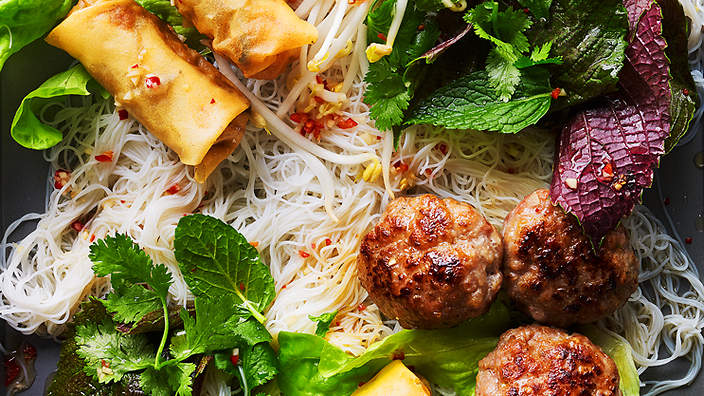
A Filling and delicious Bun Cha (Sen Restaurant & Wine Bar)
What you can do if you come to Vietnam for food
Many come to Vietnam just for the little strange experience tasting the authentic Pho or spring rolls. Some will enjoy sitting at the street vendors while others appreciate the upscale all-in-one and polished Quan An Ngon restaurants in both Hanoi and Ho Chi Minh City. Most will sure pass the words and photos about the food venture that they intentionally or unintentionally take in Vietnam. Here are some ideas for those who are serious about culinary tour in Vietnam:
1 – You can do it on your own or have a travel agency arrange a food tour for you. Either way, we suggest you to read first before you go. Some basic understanding of Vietnam Food will sure make a difference – you will be especially impressed when experiencing first hand what you already know.
2 – If you travel with a pre-tailored tour, make sure that you check what is included. Many tour agencies will offer to take you on a cooking class tour – which is fun – but you probably save a lot by reserving with the cooking institution itself. Some well-organized tours will offer to take you to meet food growers such as talking to farmers and learn how to harvest herbs yourself. Those are the good ones!
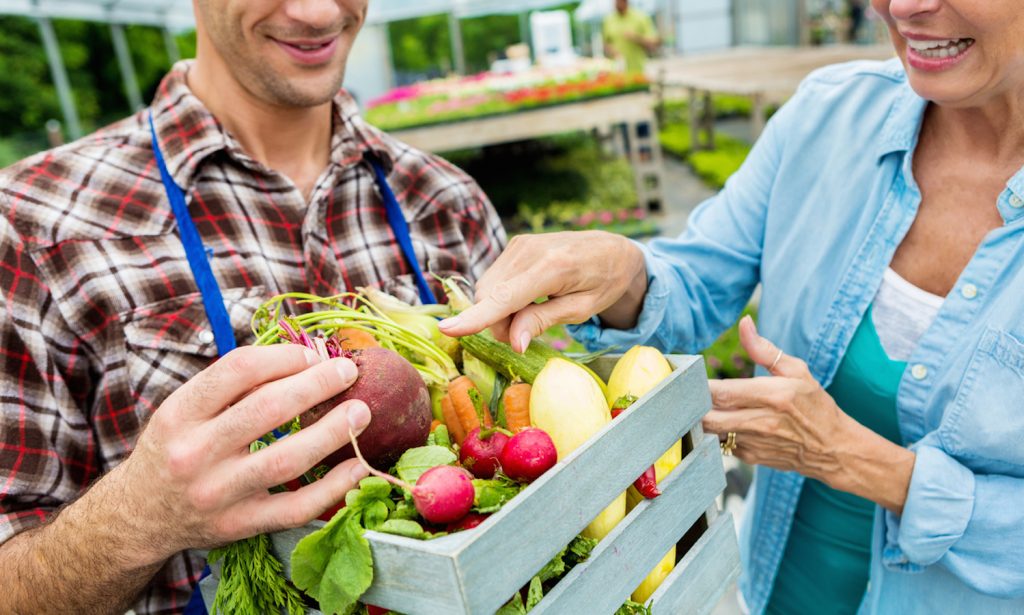
Mid adult Caucasian holds a basket containing a variety of fresh vegetables. The woman is shopping at local farmers’ market.
3 – If you are doing your own culinary trip, we suggest you to pick a few destinations that interest you the most in terms of food (no more than 5 or else the profundity of the adventure will be lost). For example, Hue is a great place to learn about royal delicacies. You can read about Cooking class in Hue to see what people normally do on a trip and follow suits. Hanoi, on the other hand, is a charming capital of unique plates. Start your adventure inside the Old Quarter and you will get all the essence.
4 – Whichever route you run, make sure you get a good camera. Most of the time words will not be able to document the experience as much as the photo and you know Cameras don’t lie! Post them on your blog, album and share your experiences with friends and families!
5 – Last but not least, tempting as they are, street vendors are not always the best place to try out your stomach. If you have not been to a developing country before, your body may not be healthy enough to resist all the tropical bacteria. Carry a hand sanitizer around will not take much of your luggage and will save you from unwanted diseases.
Enjoy Vietnam! Bon Appetit!